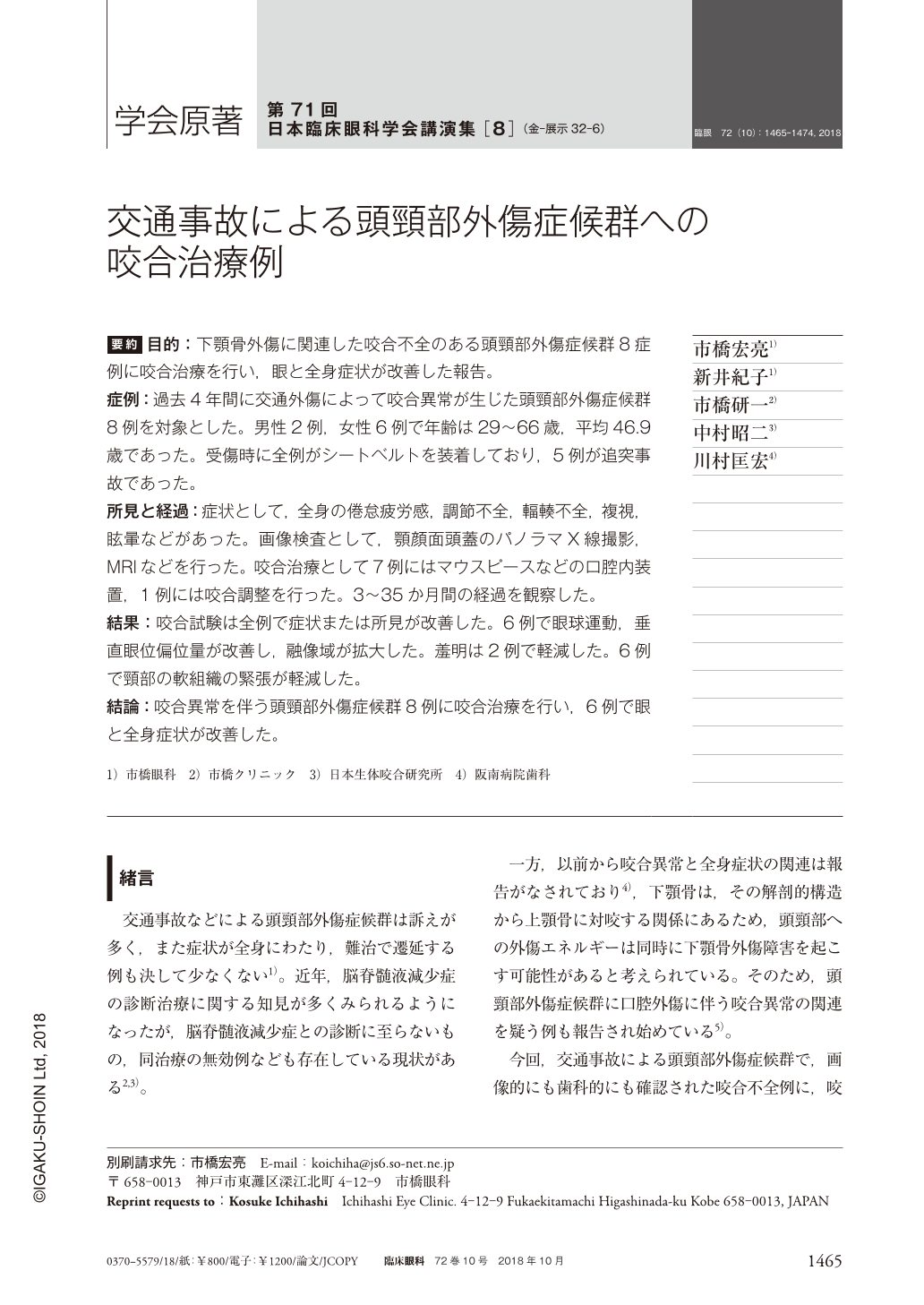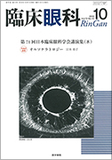Japanese
English
- 有料閲覧
- Abstract 文献概要
- 1ページ目 Look Inside
- 参考文献 Reference
要約 目的:下顎骨外傷に関連した咬合不全のある頭頸部外傷症候群8症例に咬合治療を行い,眼と全身症状が改善した報告。
症例:過去4年間に交通外傷によって咬合異常が生じた頭頸部外傷症候群8例を対象とした。男性2例,女性6例で年齢は29〜66歳,平均46.9歳であった。受傷時に全例がシートベルトを装着しており,5例が追突事故であった。
所見と経過:症状として,全身の倦怠疲労感,調節不全,輻輳不全,複視,眩暈などがあった。画像検査として,顎顔面頭蓋のパノラマX線撮影,MRIなどを行った。咬合治療として7例にはマウスピースなどの口腔内装置,1例には咬合調整を行った。3〜35か月間の経過を観察した。
結果:咬合試験は全例で症状または所見が改善した。6例で眼球運動,垂直眼位偏位量が改善し,融像域が拡大した。羞明は2例で軽減した。6例で頸部の軟組織の緊張が軽減した。
結論:咬合異常を伴う頭頸部外傷症候群8例に咬合治療を行い,6例で眼と全身症状が改善した。
Abstract Purpose:To report 8 cases who developed head and neck trauma syndrome with occlusion disorder following traffic accident and who improved after occlusion therapy.
Cases:This retrospective study was made on 8 cases who developed head and neck trauma syndrome with occlusion disorder following traffic accident in the past 4 years. The series comprised 2 males and 6 females. The age ranged from 29 to 66 years, average 46.9 years. All the 8 cases were involved in traffic accident while wearing safety seat belt. Five cases suffered from rear-end collision.
Findings and Clinical Course:Subjective symptoms were variable and involved tired feelings, insufficient accommodation or convergence, diplopia and vertigo. They were examined by panoramic x-ray examination of the head, face, or mandibula, and by magnetic resonance imaging(MRI)of the head, maxillofacial cranium, spine. Occlusion disorder was treated by oral appliances including mouth piece in 7 cases. One case received adjustment of occlusion only.
Results:State of occlusion improved in all the cases. Six cases showed improved ocular movement, enlarged vertical eye movement, or wide fusion area. Photophobia improved in 2 cases. Six cases showed decreased tension of soft tissue in the neck.
Conclusion:Six out of eight cases of head and neck trauma syndrome with occlusion disorder showed improvements in ocular and systemic symptoms following treatment for occlusion.

Copyright © 2018, Igaku-Shoin Ltd. All rights reserved.


